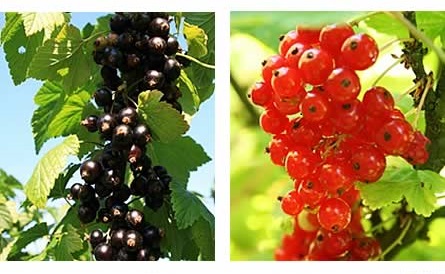
Looking for Facts About Currants in 2025? Scroll down this page and follow the links. And if you bring home some fruit or vegetables and want to can, freeze, make jam, salsa or pickles, see this page for simple, reliable, illustrated canning, freezing or preserving directions. There are plenty of other related resources, click on the resources dropdown above. If you are having a hard time finding canning lids, I've used these, and they're a great price & ship in 2 days.
If you have questions or feedback, please let me know! There are affiliate links on this page. Read our disclosure policy to learn more.
Facts About Currants
Facts About Currants
Here are some useful, interesting, and fun facts about currants:

And be sure to see this page of currant picking tips, recipes, etc.
- Currants have been cultivated for centuries and have a rich history dating back to ancient Greece and Rome.
- The term "currant" is believed to have originated from the Greek island of Corinth, where the small grapes that resemble currants were grown.
- Currants come in three main colors: red, black, and white. Each color has its distinct flavor and uses.
- Red and white currants are often used in desserts, jams, and sauces, while black currants are commonly used for beverages, syrups, and even savory dishes.
- Black currants were banned in the United States for decades in the early 1900s due to concerns about spreading a disease that affected white pine trees. The ban was lifted in the 1960s after improved disease management practices were developed.
- Currants are rich in vitamin C and antioxidants, making them a nutritious addition to your diet.
- In some cultures, currants are considered a symbol of good luck and prosperity.
- The strong flavor of black currants comes from compounds called terpenes, which give them their distinctive aroma and taste.
- Currants can be enjoyed fresh, dried, frozen, or processed into various products like jams, juices, and wines.
- The tartness of currants makes them an excellent pairing with sweet and savory ingredients in cooking.
- Currants are commonly used in traditional European dishes, including British summer puddings and Scandinavian berry soups.
- In some parts of the world, currants are used in traditional medicine for their potential health benefits, including supporting immune health and reducing inflammation.
- Currant bushes are relatively easy to grow, making them a popular choice for home gardeners.
- Currants are often enjoyed by birds, so gardeners might need to take measures to protect their currant crops from feathered visitors.
- The currant industry plays a significant role in some regions' economies, particularly in places like New Zealand and parts of Europe.
- The currant harvest season is relatively short, usually spanning a few weeks during the summer months.
- Currant festivals and events are held in various parts of the world to celebrate the harvest and the versatile uses of currants.
- Currants are often used to add flavor to baked goods, including cakes, muffins, and scones.
- The use of currants in culinary creations dates back to medieval times when they were used to add sweetness to dishes.
- Some cultivars of currants are bred for disease resistance and improved flavor, making them more reliable for both commercial and home cultivation.
- The flavor of currants can vary depending on the growing conditions, soil type, and climate, leading to unique regional variations in taste.
Looking for canning equipment and supplies?
Water bath canner with a jar rack
Pressure canners for gas, electric and induction stoves: Presto 23Qt or T-fal 22Qt
Canning scoop (this one is PERFECT)
Ball Blue book (most recent version)
Jars: 8oz canning jars for jams
Find Other types of farms:
Farm markets and roadside stands
Road trips and camping resources
Local Honey, apiaries, beekeepers
Consumer fraud and scams information
Home canning supplies at the best prices on the internet!
Maple Syrup Farms, sugarworks, maple syrup festivals
Environmental information and resources
Farms For Your Event for birthday parties, weddings, receptions, business meetings, retreats, etc.
Festivals - local fruit and vegetable festivals
Get the
most recent version of
the Ball Blue Book
With this Presto 23 quart pressure canner and pressure cooker, you can "can" everything, fruits, vegetables, jams, jellies, salsa, applesauce, pickles, even meats, soups, stews. Model 01781

You can make jams, jellies, can fruit, applesauce, salsa and pickles with water bath canners, like this Granite Ware 12-Piece Canner Kit, Jar Rack, Blancher, Colander and 5 piece Canning Tool Set

